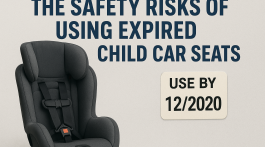A Los Angeles woman was arrested on arson and insurance fraud charges after State Farm, accused her of purposefully setting her home on fire.
Their evidence? Cell-tower data showed Jaclyn Bentley’s phone pinged 5 to 12 miles away from a campsite she claimed to be at during the fire, towards her house. From this alone, State Farm insinuated she was leaving her home to return to the campsite after ignited the fire for insurance money.
Retrieving cell-tower data as sound evidence for claim denials or even insurance fraud is slowly becoming a common strategy for insurance companies. It’s a controversial practice, however, and not just amongst the insurees.
“Insurance premium payments are, essentially, an agreement between you and your insurance company that it will supply compensation or covered claims,” Liljegren writes in his legal blog. “However, insurance companies are in the business to make money, and paying claims costs money.”
As a former insurance defense attorney, Liljegren notes insurance companies have always looked for ways to avoid paying claims from sending out claim adjustors to launching independent investigations. When misused, however, cell-tower data could be pushing the boundaries of good versus bad faith insurance practices.
Bentley is currently suing State Farm for failing to pay her claim after being acquitted of all arson and insurance fraud charges. In court, she was able to disprove the insurance company’s claim of cellphones only pinging towers within 3 to 4 miles; while at the campground Bentley checked her voicemail and received two phone calls, all of which pinged to three separate towers as far as 17 and 20 miles away.
Bentley believes these other pings are what ultimately led to a not guilty verdict- and that’s a safe assumption. Many experts agree that while cell-tower data may be used as a piece of the evidence, it’s not enough on it’s own nor is it always accurate.
There are many factors that decide what tower a cell phone will ping including strongest signals, proximity, cost and weather conditions like cloud coverage. Due to the misconception that proximity is the only factor, there’s too much room for data misinterpretation by non-experts. Bentley’s case is just one recent example.
“Proving that an insurance company mishandled, misinterpreted, or misrepresented cell phone tower data can be a significant challenge,” Liljegren writes on his legal blog. “The plaintiffs who have had to do so in recent years have incurred legal expenses, fines, financial strain, and even jail time due to false accusations.”
It’s imperative California resident understand their rights in these scenarios and know they can fight back against these huge companies. Many injury attorneys have years of experience working with and against insurance companies and can be a huge advantage to insurees. If hiring an attorney is the main concern, remember most accident and injury attorneys operate on contingency fees, taking away some worry.




No Comment